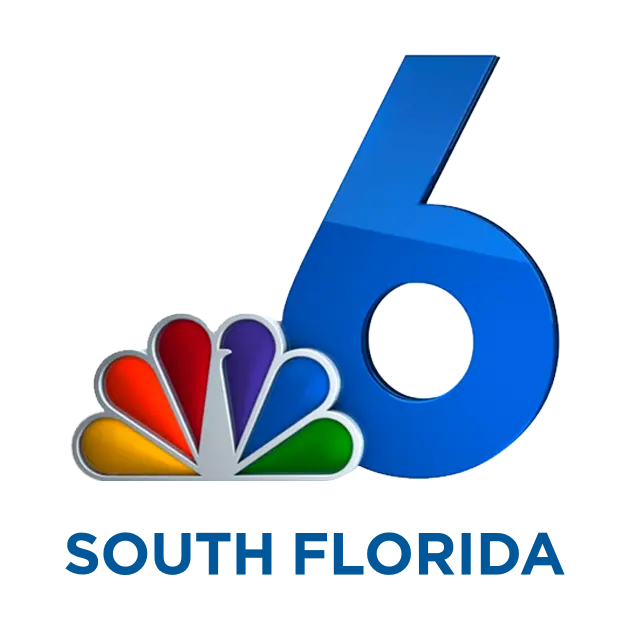















Lighthouse Point, Florida, is a charming coastal city known for its scenic beauty and vibrant community. As of 2022, its population was approximately 10,496, and its median age was 55.2, reflecting a mature and stable community.
Economically, Lighthouse Point is supported by key industries such as professional, scientific, and technical services, healthcare and social assistance, and real estate. These sectors provide most of the employment opportunities for the 5,310-strong workforce.
However, like any other thriving community, Lighthouse Point is not immune to accidents, especially slip-and-fall incidents. These can occur in various settings, from bustling shopping centers to serene parks, necessitating the expertise of dedicated slip-and-fall lawyers to ensure that residents receive the compensation they deserve for their injuries.
If you’ve been injured due to someone else’s negligence, contact the Lighthouse Point slip and fall lawyers of Madalon Law. Our experienced attorneys will provide solid legal counsel and handle every aspect of the litigation to build a winning case.
Imagine strolling through a park or the parking lot of a mall when, suddenly, a hidden hazard sends you tumbling to the ground. Slip-and-fall accidents can turn an ordinary outing into a painful ordeal in the blink of an eye. These incidents happen when someone loses their footing due to dangerous conditions, and they can lead to severe injuries like sprains, fractures, and head trauma.
In Lighthouse Point, slip-and-fall accidents can occur in various locations, from public parks and marinas to residential areas and commercial establishments. The combination of environmental factors, like weather conditions and human negligence, such as poor maintenance or lack of proper signage, often contributes to these accidents.
Knowing where these accidents frequently occur in Lighthouse Point can help you stay aware and safe, ensuring your time in this beautiful city remains enjoyable and injury-free. Here are some of the common Locations for Slip-and-Fall Accidents in Lighthouse Point:
However, the park’s grassy areas can become slippery after a rainstorm. Wet grass and muddy trails pose significant slipping hazards, making it crucial for visitors to be cautious and wear appropriate footwear to prevent accidents.
However, the park’s high usage can lead to several slip-and-fall risks. Wet surfaces from irrigation or rain, trail debris, and uneven walkways are common hazards. Whether playing sports, attending an event, or simply walking through the park, visitors should remain vigilant to avoid potential falls.
The marina’s wet docks and slippery boat ramps are primary slipping hazards, especially when combined with the hustle and bustle of a busy marina environment. For those unsteady on their feet, these wet and often uneven surfaces can pose significant risks, making careful navigation essential.
However, while visually appealing, the polished floors and poolside areas can become incredibly slick when wet. This can be hazardous during busy events or around the pool area, where water spillage is common. Visitors should exercise caution and wear non-slip footwear to mitigate the risk of falling.
Additionally, poorly maintained entrances and walkways can lead to slips and falls. Patrons should be mindful of their surroundings and look for any posted warning signs about wet floors.
Homeowners should regularly inspect and maintain their properties to reduce the likelihood of accidents, while residents and visitors should remain cautious and attentive to their environment.
Slip-and-fall accidents in Lighthouse Point can result from various hazardous conditions, each presenting unique risks to residents and visitors. Understanding these common causes can help you take the necessary precautions to avoid such incidents and stay safe.
Lack of Proper Signage
The absence of proper signage can lead to slip-and-fall accidents, especially in areas undergoing repair or with known hazards. Unmarked hazards, such as wet floors in shopping centers or construction zones, pose a significant risk to unsuspecting visitors. Proper signage is crucial to warn individuals of potential dangers and prevent accidents.
However, even when signs are present if they are not placed in visible locations, they fail to warn people effectively, leading to an increased risk of falls.
Uneven or Damaged Walkways
Uneven or damaged walkways are another common cause of slip-and-fall accidents. Over time, sidewalks and pathways can develop cracks and potholes, especially in high-traffic areas or older neighborhoods. These irregularities can easily trip up an unsuspecting pedestrian, causing them to fall and potentially suffer serious injuries.
Poor maintenance exacerbates this issue, as neglected walkways in residential areas and public parks can deteriorate, creating uneven surfaces that increase the risk of falls. Regular upkeep and timely repairs are crucial to maintaining safe walkways for all.
Inadequate Lighting
Poor lighting significantly contributes to slip-and-fall accidents, as it can hide potential hazards from view. Dim lighting in parking lots, alleys, and walkways makes it difficult for pedestrians to see where they are stepping, increasing the likelihood of falls.
It is a particular issue in areas like the Lighthouse Point Marina and residential neighborhoods, where visibility is crucial for safe navigation. Inadequate illumination can result from burned-out bulbs or insufficient lighting installations, making it challenging for individuals to detect hazards in their path.
Wet and Slippery Surfaces
One of the primary causes of slip-and-fall accidents is wet and slippery surfaces. In Lighthouse Point, frequent rainfall can leave sidewalks, parking lots, and outdoor paths dangerously slick. Parks such as De Groff Park and Frank McDonough Park are particularly prone to muddy trails and wet grass after a storm, making them hazardous for pedestrians.
Additionally, in busy areas like Lighthouse Point Plaza, spills from food or drinks and cleaning activities can create temporary but significant slip hazards if not promptly addressed. These wet conditions can catch people off guard, leading to sudden and often severe falls.
Debris and Obstacles
Debris and obstacles on walkways present a significant hazard, particularly in parks and residential areas. Fallen leaves, branches, and litter can create slippery conditions or trip hazards if not regularly cleared away. It is widespread during the fall season when leaves accumulate on paths.
Temporary obstacles, such as construction materials, improperly placed signs, or merchandise in shopping centers, can also obstruct pathways, causing accidents. Keeping walkways clear of debris and obstacles is essential to prevent these slip-and-fall incidents.
Improper Flooring Materials
The use of improper flooring materials can also contribute to slip-and-fall accidents. Locations like the Lighthouse Point Yacht Club, with their elegant but slick flooring, can only be treacherous with adequate traction, especially when wet.
Similarly, worn or torn carpeting in commercial and residential settings can bunch up or tear, creating tripping hazards. Ensuring that flooring materials provide sufficient grip and are well-maintained is vital to preventing these accidents.
Slip-and-fall accidents can lead to a wide range of injuries, some of which may have long-term or permanent effects. Understanding the types of injuries commonly associated with these accidents can help victims and their families recognize the severity of the situation and seek appropriate medical and legal assistance.
Head Injuries
Particularly alarming are head injuries from slip-and-fall incidents, which can range from minor concussions to severe traumatic brain injuries (TBI). Even little head traumas can cause serious health problems, including migraines, vertigo, and cognitive decline. Severe TBIs frequently need prolonged medical care and rehabilitation because they can have a lifelong influence on memory, behavior, and physical ability.
According to the CDC, falls are the most significant cause of TBI-related hospitalizations. It highlights the urgent need for preventative measures, including routine pathway maintenance and safety features like railings and non-slip surfaces.
Nerve Damage
A fall that affects the body’s neurological system might cause neuropathy and subsequent nerve damage. This injury can cause tingling, numbness, or persistent pain in the afflicted areas. It arises from the compression, stretching, or cutting of nerves during the fall.
For instance, a person who falls and lands on their back may suffer from spinal nerve injury, which might result in chronic discomfort or loss of feeling in the legs. These symptoms may need long-term care, such as medication, physical therapy, or surgery, and they can majorly impact day-to-day functioning. The Mayo Clinic states that nerve injury resulting from falls is a severe issue that frequently needs specialist care to control pain and regain function.
Knee Injuries
Meniscus tears and other knee injuries, such as ripped ligaments, are common in slip-and-fall incidents and can significantly limit mobility. An ACL rupture or meniscus injury is a ligament injury resulting from the knee twisting or bearing an abnormal load during a fall. These injuries are excruciating and severely limit mobility, making ordinary tasks difficult.
Surgical repair and intensive physical therapy are common forms of treatment for knee injuries aimed at regaining full function.
Internal Injuries
Internal injuries, such as internal bleeding or organ damage, can occasionally result from slip-and-fall incidents. These injuries are hazardous since they are frequently concealed. These injuries could not be visible immediately, which might cause delays in diagnosis and treatment and lead to severe consequences.
For instance, a fall that results in a blunt force injury to the abdomen might harm internal organs such as the spleen or liver, causing internal bleeding that, if left untreated, could be fatal. According to National Institutes of Health research, falls-related internal injuries account for a substantial portion of older individuals’ deaths. It underscores the significance of prompt medical diagnosis and intervention.
Cuts and Bruises
Even while cuts and bruises from slip-and-fall incidents can appear small, they frequently need medical care and can still cause agony. Deep wounds may require stitches to avoid infection and facilitate appropriate healing, and significant bruises may indicate more serious underlying injuries. If a person falls onto a sharp instrument and sustains a substantial cut on their leg, they may need medical attention immediately to prevent further issues.
Extensive bruises might be a sign of more severe problems, including internal bleeding or fractures. According to an American College of Emergency Physicians survey, cuts and bruises comprise a sizable percentage of emergency department visits after falls.
Fractures and Broken Bones
The top injury from slip-and-fall incidents is a fracture. Broken bones in the wrists, arms, ankles, or hips are common among victims. The National Safety Council reports that falls account for nearly 8 million hospital visits annually and are the primary cause of non-fatal injuries in the US.
Hip fractures are especially dangerous for elderly persons since they can result in severe complications and even higher death rates. According to the Centers for Disease Control and Prevention (CDC), hip fractures account for over 300,000 hospital admissions among the elderly population each year, with falls being a common cause.
Sprains and Strains
Sprains and strains, especially to the ankles and wrists, are common after slip-and-fall incidents. These injuries happen when a sudden fall stretches or tears muscles or ligaments.
According to statistics from the National Safety Council, sprains and strains account for more than 2 million fall-related injuries annually. These injuries can be painful and severely limit movement; thus, they may not necessarily require surgery but need medical attention and rehabilitation.
Shoulder Injuries
Shoulder injuries such as fractures and dislocations are frequent in slip-and-fall incidents. These injuries frequently happen when sufferers use their arms to break their fall out of instinct, which puts too much strain on the shoulder joint. When the upper arm bone slips out of its socket, it results in a shoulder dislocation, which can be extremely painful and immobile. Shoulder blades and collarbones can sustain fractures that call for medical attention.
Appropriate treatment is crucial for shoulder injuries that do not result in long-term mobility problems. Research in the Journal of Orthopaedic Research states that falls cause shoulder injuries, which are more common among older persons and frequently need prolonged rehabilitation.
Back and Spinal Cord Injuries
Severe damage to the back and spinal cord from falls can result in persistent pain, ruptured discs, or even paralysis. These injuries are especially problematic because they may impact mobility and quality of life in the long run. For example, a herniated disc can happen when a fall causes a spinal disc to push out of position, compressing surrounding nerves and producing excruciating agony.
According to data from the National Spinal Cord Injury Statistical Center (NSCISC), falls are the second most common cause of spinal cord injuries in the US. This emphasizes how crucial it is to implement safety precautions like wearing the proper fall protection gear, keeping paths clean, and offering sufficient training to prevent these catastrophic accidents.
Establishing liability in a slip-and-fall case in Lighthouse Point is crucial for obtaining compensation for injuries and damages. Premises liability law holds property owners and managers accountable for maintaining safe conditions. Several key elements must be established to prove liability in a slip-and-fall case.
Duty of Care
The first step in proving liability is demonstrating that the property owner or manager owed a duty of care to the injured party. This duty varies depending on the visitor’s status (invitee, licensee, or trespasser). Invitees, such as store customers or event attendees, are owed the highest duty of care.
Property owners must regularly inspect the premises for hazards, promptly address potential dangers, and provide adequate warnings if immediate repair isn’t possible. This proactive approach is essential to preventing accidents and ensuring a safe environment for all visitors.
Breach of Duty
Once a duty of care is established, the next step is to show that the property owner or manager breached this duty by failing to maintain safe conditions. This breach could involve not addressing known hazards, failing to conduct regular inspections, or not providing adequate warnings about potential dangers.
For example, if a property owner is aware of a broken step but does not repair it or warn visitors, this negligence constitutes a breach of their duty. Such failures significantly increase the risk of accidents, highlighting the importance of diligent property maintenance and hazard management.
Damages
The final element in proving liability is demonstrating that the slip-and-fall incident resulted in actual damages. These damages include medical bills, lost income, pain and suffering, and other related expenses.
For example, a person who falls and breaks a leg may incur significant medical costs for treatment and rehabilitation, miss work during recovery, and experience ongoing pain and discomfort. Documenting these damages is crucial in a lawsuit, as it quantifies the financial and emotional impact of the accident, strengthening the plaintiff’s claim for compensation.
Gathering Evidence
Effective evidence-gathering is essential to building a solid case. Photographs and videos of the accident scene immediately after the fall can capture the hazards that caused the fall, such as wet floors, uneven surfaces, or obstructions. Witness statements from those who saw the accident can provide valuable support, corroborating the presence of the hazard and the circumstances leading to the fall. Filing an incident report with the property owner or manager as soon as possible after the accident is also critical. This report documents the details of the incident and can serve as evidence in the case.
Additionally, obtaining comprehensive medical records that document the injuries in the slip-and-fall accident is crucial. These records should include diagnoses, treatment plans, and any long-term prognosis related to the injuries. Requesting maintenance and inspection records from the property owner can help establish whether the property was regularly maintained and inspected for hazards. A lack of proper maintenance or failure to address known issues can support the negligence claim.
Timely Documentation and Reporting
Prompt reporting and documentation of the slip-and-fall accident are vital to preserving evidence and strengthening the case. Reporting the incident to the property owner or manager as soon as it occurs helps establish the timeline and validates the claim. Delayed reporting can raise questions about the claim’s validity and make it harder to prove the hazardous condition existed at the time of the accident. Preserving any physical evidence related to the accident, such as the clothing and footwear worn at the time, can also be significant. This evidence can help demonstrate the conditions that contributed to the fall.
Florida’s statute of limitations for filing a slip-and-fall lawsuit is generally four years from the accident date. Please file within this timeframe to avoid losing the right to pursue compensation.
Surveillance Footage
Requesting surveillance footage from the accident site can provide critical evidence. Many commercial properties and public places have surveillance cameras that might have captured the slip-and-fall incident. Access to this footage can provide an objective view of the accident and the conditions that caused it, further supporting the claim.
Proving liability in a slip-and-fall case in Lighthouse Point requires a comprehensive approach to evidence gathering and documentation. Victims can build a strong compensation case by establishing the duty of care, breach of duty, causation, and damages and collecting robust evidence. Seeking the expertise of experienced Lighthouse Point Slip-and-Fall Lawyers can provide the necessary support and guidance to navigate this complex process and ensure a fair outcome.
When a slip-and-fall accident occurs in Lighthouse Point, the injured party might be authorized for numerous damages to compensate for their physical, emotional, and financial losses. These damages are generally sorted into economic (monetary) and non-economic damages, each addressing different aspects of the victim’s suffering and expenses.
Economic Damages
These are intended to cover the direct financial costs resulting from the accident. One of the most significant components of monetary damages is medical expenses. It includes fees for emergency room visits, night stays, operations, medications, physical therapy, and any necessary medical equipment. Future medical expenses, such as ongoing rehabilitation or long-term care, are also considered.
Moreover, sufferers have the right to reimbursement for lost wages if their injuries prevent them from working. It encompasses the income they would have earned during their recovery period. In cases where injuries lead to lifetime disability, loss of earning capacity can also be claimed, accounting for the potential income the victim would have earned if the accident had not occurred.
Non-Economic Damages
These compensate for the intangible impacts of the accident, which can be just as debilitating as physical injuries. Emotional and physical misery cover the physical discomfort and emotional distress caused by the accident and the subsequent injuries. It includes chronic pain, anxiety, depression, and other psychological impacts.
Emotional grief addresses the significant mental health issues that may arise, such as post-traumatic stress disorder (PTSD), which can profoundly affect a victim’s quality of life.
Moreover, consortium damages can be lost to the injured party’s spouse or family members. This compensation addresses the loss of companionship, support, and intimacy resulting from the victim’s injuries.
Several factors can influence the damages awarded in a slip-and-fall case in Lighthouse Point. These factors are crucial in determining a victim’s compensation and highlight the complexities of such legal cases.
Evidence of Negligence
The strength of the evidence proving the property owner’s negligence and liability can significantly impact the damages awarded. Clear and compelling evidence, such as witness testimonies, surveillance footage, incident reports, and maintenance records, can strengthen the victim’s claim and increase compensation. Solid evidence establishes the property owner’s responsibility for the unsafe conditions that led to the accident, which is crucial in determining the level of damages.
Severity of Injuries
The severity of the injuries in a slip-and-fall accident is a primary factor affecting the damages awarded. More severe injuries typically result in higher compensation.
For instance, minor bruises and cuts may warrant less compensation compared to severe fractures, spinal injuries, or traumatic brain injuries, which require extensive medical treatment and rehabilitation and can have long-lasting impacts on the victim’s life.
Comparative Negligence
In Florida, the concept of comparative negligence can affect the amount of compensation awarded. If the victim is found to be partially at fault for the accident, their compensation will be reduced by the percentage of their fault.
For example, if the victim is deemed 20% responsible for the accident, their total compensation will be reduced by 20%. This principle underscores the importance of presenting a solid case that minimizes the victim’s perceived responsibility for the incident.
Impact on Daily Life
Another significant factor is how the injuries affect the victim’s ability to perform daily activities, work, and engage in recreational activities. Injuries that severely limit the victim’s mobility or ability to work can lead to substantial non-economic damages for pain and suffering, loss of enjoyment of life, and loss of consortium.
For example, if an injury prevents the victim from returning to their job or participating in hobbies they once enjoyed, the compensation for decreased quality of life and emotional distress will be higher.
Documentation and Reporting
Timely documentation and reporting of the accident can also influence the compensation amount. Promptly reporting the incident to the property owner or manager, seeking immediate medical attention, and preserving evidence such as photographs, videos, and witness statements can strengthen the victim’s case. Delays in reporting or insufficient documentation can weaken the claim and reduce the potential compensation.
Duration of Recovery
The length of the recovery period and any long-term or permanent disabilities resulting from the injuries also influence the total compensation. A prolonged recovery period with ongoing medical treatments, rehabilitation, or permanent disability increases the damages awarded to cover these extensive needs. Victims who require long-term care or face lifelong limitations due to their injuries may receive higher compensation to address these enduring challenges.
Insurance Policy Limits
The property owner’s insurance policy limits can also affect the compensation amount. If the insurance coverage is insufficient to cover the full extent of the damages, the victim may need to seek additional compensation directly from the property owner or through other legal avenues. Understanding the policy limits and exploring all possible sources of compensation is crucial in ensuring the victim receives adequate financial recovery.
Although being in a slip-and-fall accident can be stressful, it’s important to act appropriately immediately to safeguard your safety and legal rights. Here are the essential actions to take after a slip-and-fall accident in Lighthouse Point:
Prioritize Your Health
Immediately after a slip-and-fall accident, seek medical attention even if your injuries seem minor. Some injuries may not show symptoms immediately, and a prompt medical evaluation ensures all injuries are properly documented, which is crucial for legal claims.
Notify the Property Owner
Report the accident to the property owner or manager as soon as possible. Ensure an official incident report is filed, as this document can be critical evidence if you seek compensation for your injuries.
Document the Scene
Collect evidence at the accident scene. Take photographs and videos of the hazardous conditions that led to your fall, such as wet floors, uneven surfaces, or poor lighting. If there are witnesses, obtain their contact information and statements to support your account of the incident.
Keep Physical Evidence
Preserve any physical evidence of the accident, including your clothing and shoes. These items can provide valuable insight into the conditions contributing to your fall and strengthen your claim.
Be Cautious with Statements
Make sure to consult a slip-and-fall lawyer before making statements or signing documents from the property owner, insurance company, or attorneys. Accepting settlements or making statements too soon can compromise your ability to secure total compensation.
Consult a Slip-and-Fall Lawyer
Contact an experienced slip-and-fall attorney to help navigate the legal process. A lawyer can explain your rights, assist in gathering evidence, negotiate with insurance companies, and represent you in court if necessary. Taking these steps promptly can significantly enhance your case and ensure you receive the compensation you deserve for your injuries and related losses.
What should I do immediately after a slip-and-fall accident in Lighthouse Point?
If you experience a slip-and-fall accident in Lighthouse Point, prioritize your health by seeking medical attention immediately. Report the incident to the property owner or manager, document the scene with photographs and videos, and collect witness information. Preserve any physical evidence, such as your clothing and shoes. Avoid making statements or signing documents without consulting a slip-and-fall lawyer to protect your rights.
How do I prove liability in a Lighthouse Point slip-and-fall case?
To prove liability in a Lighthouse Point slip-and-fall case, you must establish that the property owner or manager had a duty of care, breached that duty, and caused your injuries. Evidence such as photographs, witness statements, incident reports, and maintenance records can support your claim. An experienced slip-and-fall attorney can help effectively collect and present this evidence to prove negligence and liability.
What types of damages can I claim in a slip-and-fall case?
In a slip-and-fall case, you can claim economic and non-economic damages. Economic damages include medical expenses, lost wages, and property damage, while non-economic damages cover pain and suffering, emotional distress, and loss of enjoyment of life. In some cases, you can also claim punitive damages. Consulting with a Lighthouse Point slip-and-fall lawyer can help you understand the full extent of your claim and the types of damages you may be entitled to.
How long must I file a slip-and-fall lawsuit in Lighthouse Point?
In Florida, the statute of limitations for filing a slip-and-fall lawsuit is generally four years from the accident date. It is crucial to file within this timeframe to preserve your right to seek compensation. A slip-and-fall attorney can ensure you meet all legal deadlines and requirements to maintain the viability of your claim.
Do I need a slip-and-fall attorney to handle my case?
Hiring an attorney is not legally required, but having a slip-and-fall attorney can significantly improve your chances of obtaining fair compensation. An expert attorney will help process the lawsuit, collect proof, talk with insurance companies, and embody you in court if required. Their expertise can help maximize compensation and protect your rights throughout the legal proceedings.
What evidence is essential in a slip-and-fall case?
Critical evidence in a slip-and-fall case includes photographs and videos of the accident scene, witness statements, medical records, incident reports, and maintenance records from the property. Preserving clothing and footwear worn during the accident can also be helpful. A Lighthouse Point slip-and-fall lawyer can assist you in collecting and maintaining this evidence to strengthen your case.
How is reimbursement determined in a slip-and-fall case?
Payment in a slip-and-fall case is determined based on the intensity of the injuries, the impact on the victim’s daily life, hospital costs, lost wages, and non-economic factors such as pain and suffering. An attorney can help accurately evaluate your injuries and negotiate for fair compensation. Slip-and-fall lawyers in Lighthouse Point have the expertise to ensure you receive adequate compensation.
Can I still recover damages if I was partially at fault for the slip-and-fall accident?
Under Florida’s comparative negligence law, you can still recover damages even if you were partially at fault for the accident. However, your compensation will be reduced by the percentage of your fault. For example, if you were found 20% at fault, your compensation would be reduced by 20%. A Lighthouse Point slip-and-fall attorney can help you navigate this aspect of your case and argue for a fair assessment of fault.
What is the role of a slip-and-fall attorney in my case?
A slip-and-fall attorney will provide legal advice, gather evidence, file necessary paperwork, negotiate with insurance companies, and represent you in court. They aim to ensure you receive the maximum compensation for your injuries and losses. Having an experienced attorney on your side can significantly enhance your ability to obtain a favorable outcome in your Lighthouse Point slip-and-fall case.
After a slip-and-fall accident in Lighthouse Point, you must understand your rights and available legal options. Consulting with an experienced Lighthouse Point slip-and-fall lawyer can help you navigate your case’s complexities and ensure your rights are protected.
Specialized Knowledge and Expertise
Slip-and-fall cases fall under premises liability law, which can be complex and nuanced. Hiring a Lighthouse Point slip-and-fall attorney ensures you can access knowledge and expertise in this area. An experienced attorney understands the legal standards property owners must meet and can identify when these standards have been violated, making it easier to establish liability and build a strong case.
Comprehensive Case Management
A slip-and-fall attorney provides comprehensive case management, handling all aspects of your claim from start to finish. It includes gathering evidence, filing necessary paperwork, negotiating with insurance companies, and representing you in court. By managing these tasks, your attorney allows you to focus on your recovery while ensuring that every detail of your case is meticulously addressed.
Access to Valuable Resources
Experienced slip-and-fall attorneys have access to a network of valuable resources, including medical professionals, accident reconstruction experts, and investigators. These experts can provide critical testimony and evidence to support your case. Your attorney will leverage these resources to build a robust claim, demonstrating the property owner’s negligence and the extent of your injuries.
Maximizing Compensation
One of the key reasons to hire a slip-and-fall attorney is to maximize your compensation. Insurance companies often try to minimize victim payouts, but a skilled attorney will negotiate aggressively on your behalf. They will ensure that you receive fair compensation for all your damages, including medical expenses, lost wages, pain and suffering, and any long-term impacts on your quality of life.
Navigating the Legal Process
The legal process can be daunting, especially for those unfamiliar with it. A slip-and-fall attorney will guide you through each step, from filing your claim to presenting your case in court. They will explain your rights, keep you informed about the progress of your case, and provide expert advice to help you make informed decisions. This support is invaluable in ensuring you feel confident and prepared throughout the legal process.
Litigation
Readiness: If a fair settlement cannot be reached, having an attorney prepared to take your case to court is crucial. Your slip-and-fall attorney will be ready to present a compelling case to the judge and jury, advocating for the maximum compensation you deserve. Their litigation experience and advocacy skills are essential in securing a favorable outcome.
Protecting Your Rights
A slip-and-fall attorney is dedicated to protecting your rights and ensuring you are treated fairly throughout the legal process. They will advocate for your best interests, ensuring you receive the justice and compensation you deserve. By having an attorney on your side, you can rest assured that your case is handled by a professional committed to achieving the best possible outcome.
Ensuring Legal Compliance
Slip-and-fall cases must adhere to strict legal timelines and procedures. An attorney will ensure all necessary paperwork is filed correctly and on time, preventing potential issues that could jeopardize your claim. Florida’s statute of limitations for filing a slip-and-fall lawsuit is generally four years from the accident date. Your attorney will keep track of these deadlines and ensure your case complies with all legal requirements.
Contact the Lighthouse Point slip and fall lawyers of Madalon Law for your free consultation.